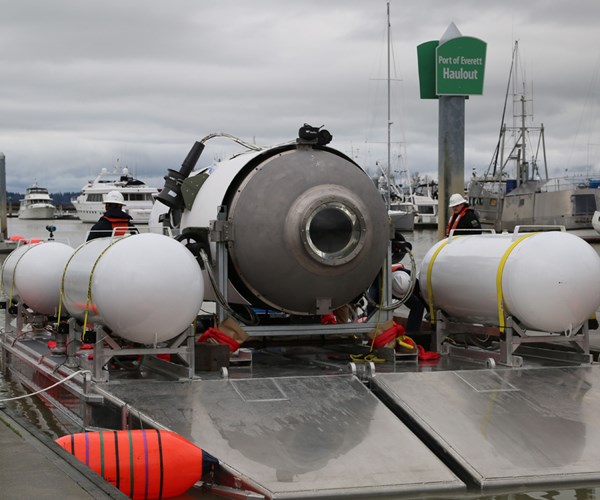Titan prepares for Titanic expedition
The composites-intensive, five-person, deep-sea submersible Titan is undergoing testing ahead of a planned trip to 4,000m re-examine the RMS Titanic in June.
Share

CW first reported on OceanGate (Everett, WA, US) a year ago, when we described the design and development of the composites-intensive Cyclops 2 five-person, deep-sea submersible vehicle. Cyclops 2, at the time, was in the final stages of production and eventually would venture down to re-examine the wreckage of the RMS Titanic in the northern Atlantic Ocean.
Today, Cyclops 2, renamed Titan, is water-ready and undergoing testing ahead of its expedition later this year to the 4,000m depths of the RMS Titanic.
Titan is comprised of two major components, a five-person submersible and an integrated launch and recovery platform. This tandem was scheduled to undergo sea trials in Puget Sound (WA) through March, with deep-sea certification to follow in the Bahamas this month. The team will then mobilize to St. John's, Newfoundland, in late June for the first manned expedition to the RMS Titanic since 2005.
As detailed in the CW report, Titan features:
- A filament wound carbon fiber hull — the largest of any manned submersible
- Two titanium hemispheres, with the forward dome hinged to serve as the access hatch
- The largest viewport of any deep-sea manned submersible
- Electronics and thruster control pods housed outside the pressure hull to increase interior space
- A fiberglass hull insert to prevent condensation from dripping on the crew and to eliminate electrical ground faults — two problems that plague metal-hulled submersibles
- A large digital display that streams a live feed from multiple exterior 4K cameras
- Acoustic modem for text-based communication between sub and surface ship
- Proprietary steering control system using a standard Playstation controller
One of the most significant innovations is Titan’s real-time structural health monitoring (RTM) system. Nine acoustic sensors and 18 strain gauges throughout the pressure vessel analyze the effects of changing pressure on the vessel as the submersible dives deeper. This onboard health analysis monitoring system provides early warning detection for the pilot with enough time to arrest the descent and safely return to surface.
"Safety is our number one priority," says Stockton Rush, OceanGate CEO. "We believe real-time health monitoring should be standard safety equipment on all manned-submersibles."
During the deep-sea certification dives in the Bahamas, Rush is expected to become the second person in history to dive solo to 4000m. These dives will validate the design depth; Titan’s maximum depth dive will be certified by an independent certification organization.
Titan will be equipped with multiple 4K cameras, multibeam sonar for navigation, data tablets with a wireless connection to onboard computer systems, 50,000 lumens of external light, a laser scanner and four electric thrusters for maximum maneuverability.
Related Content
-
Novel composite technology replaces welded joints in tubular structures
The Tree Composites TC-joint replaces traditional welding in jacket foundations for offshore wind turbine generator applications, advancing the world’s quest for fast, sustainable energy deployment.
-
PEEK vs. PEKK vs. PAEK and continuous compression molding
Suppliers of thermoplastics and carbon fiber chime in regarding PEEK vs. PEKK, and now PAEK, as well as in-situ consolidation — the supply chain for thermoplastic tape composites continues to evolve.
-
Bladder-assisted compression molding derivative produces complex, autoclave-quality automotive parts
HP Composites’ AirPower technology enables high-rate CFRP roof production with 50% energy savings for the Maserati MC20.
















